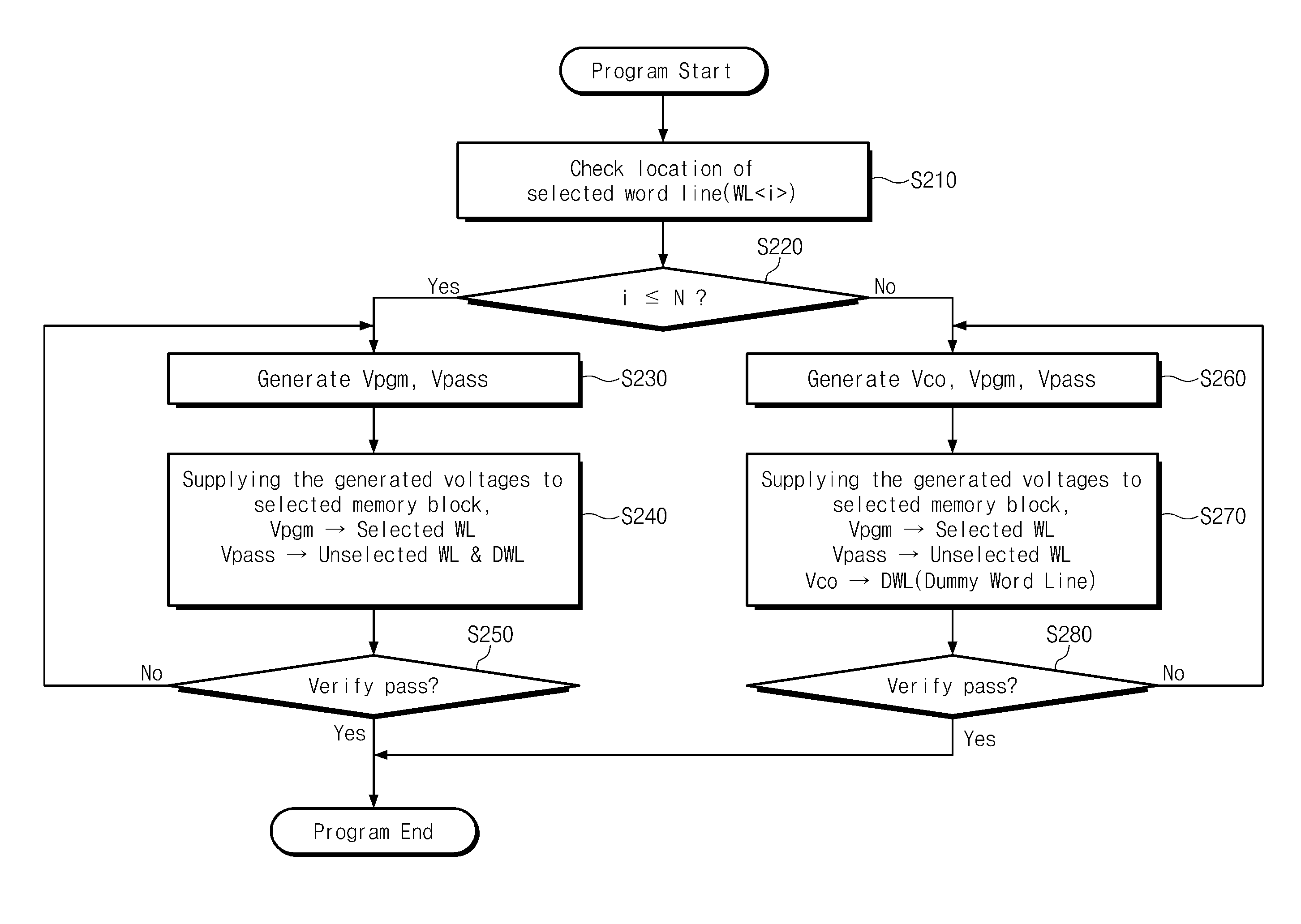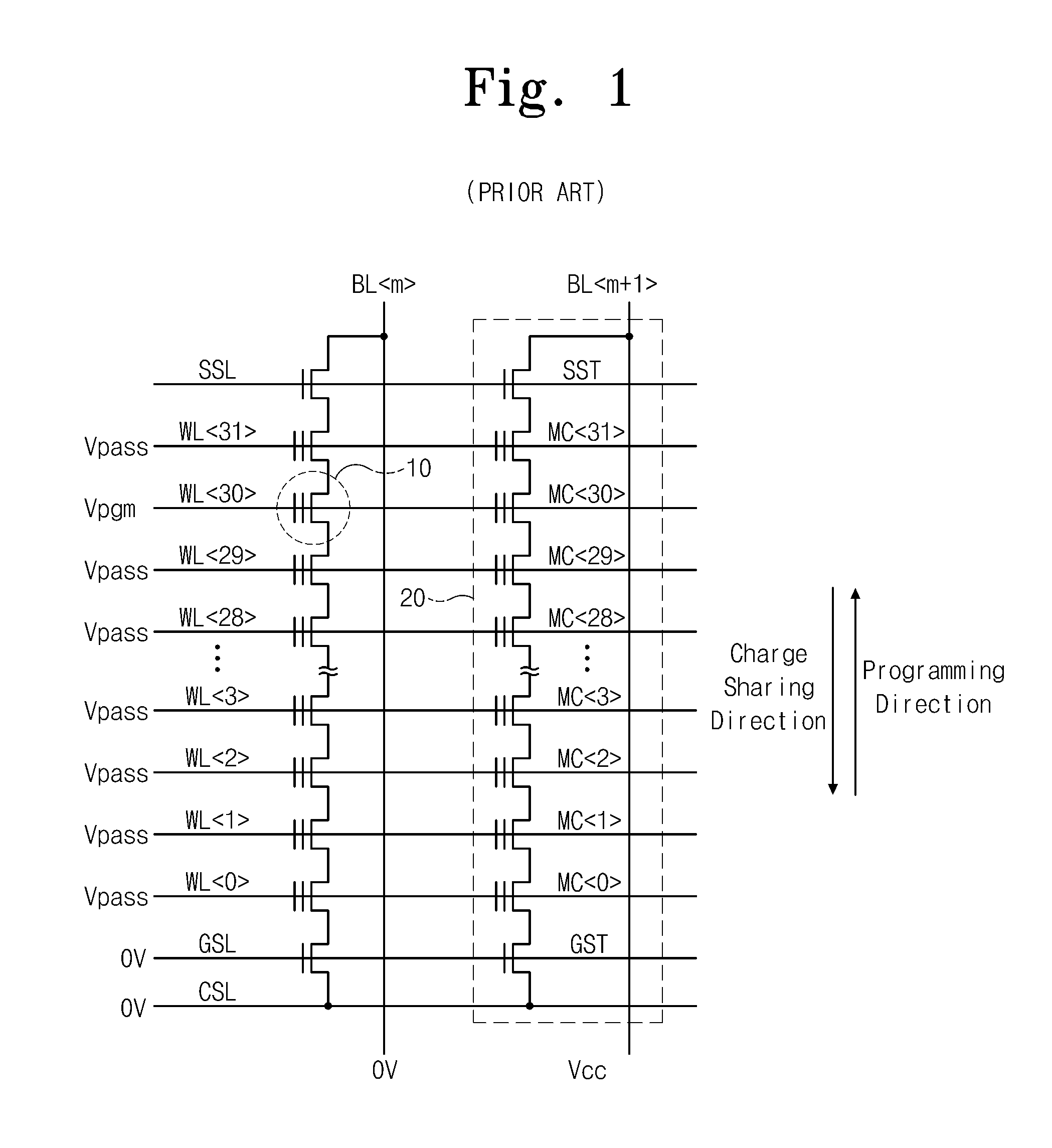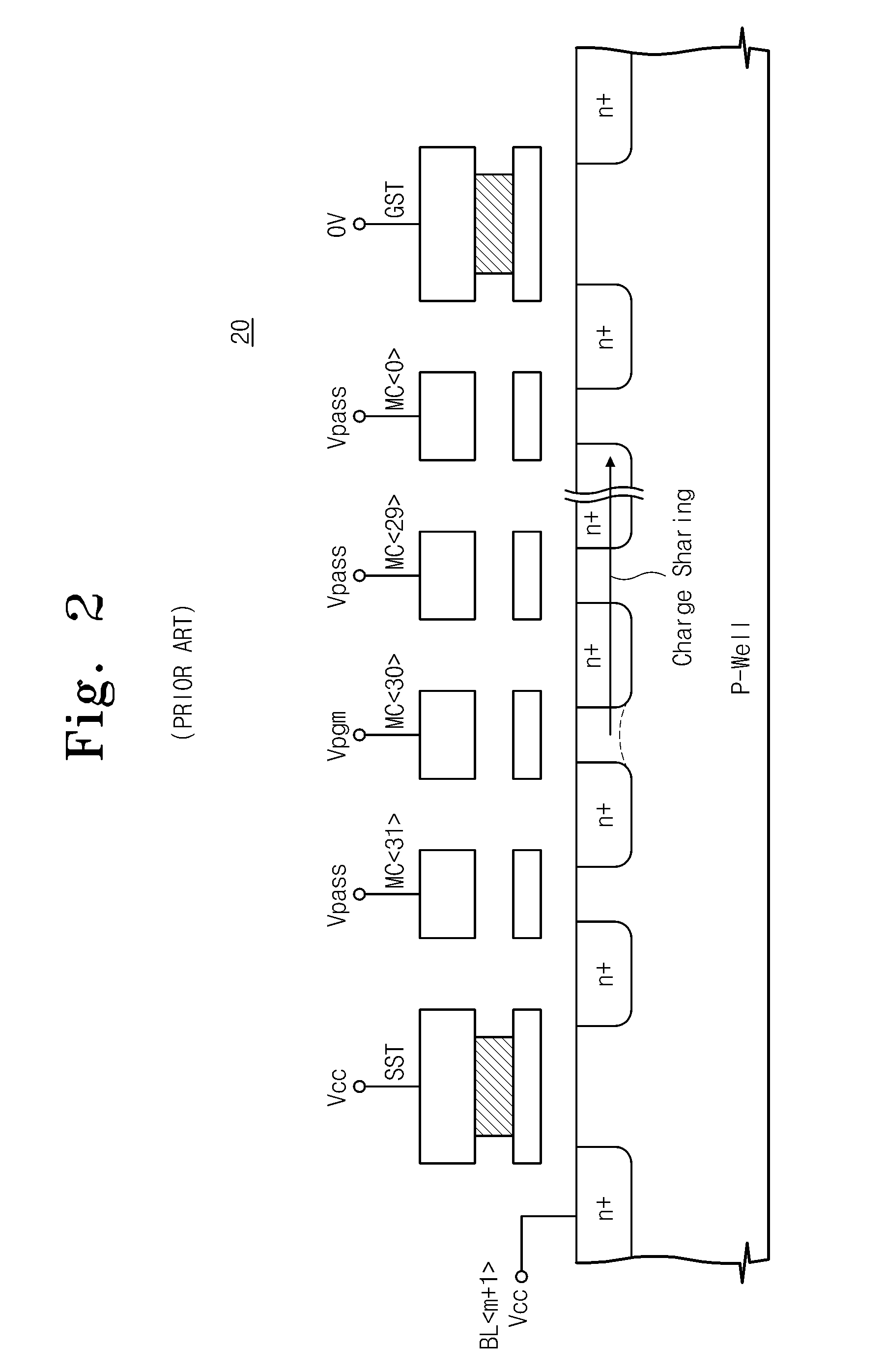Flash memory device including a dummy cell
a flash memory and dummy cell technology, applied in static storage, digital storage, instruments, etc., can solve the problems of reducing the cost of ssd, increasing the capacity, and affecting the programability of cell transistors, so as to increase the channel total capacitance, increase the probability of cell transistor mc30> being programmed, and increase the channel capacitance of unselected cell transistors.
- Summary
- Abstract
- Description
- Claims
- Application Information
AI Technical Summary
Benefits of technology
Problems solved by technology
Method used
Image
Examples
Embodiment Construction
[0040]The present invention will now be described more fully hereinafter with reference to the accompanying drawings, in which preferred embodiments of the invention are shown. This invention, however, may be embodied in many different forms and should not be construed as limited to the embodiments set forth herein. Rather, these embodiments are provided so that this disclosure will be thorough and complete, and will fully convey the scope of the invention to those skilled in the art.
[0041]FIG. 4 shows a schematic circuit diagram of an array structure according to an exemplary embodiment. Referring to FIG. 4, a dummy cell DMC is placed in each of strings 30. In each string 30, the dummy cell DMC blocks the sharing of charges being boosted in a channel of a program-inhibited cell. Furthermore, in each of the strings 30, the dummy cell DMC has the same characteristics and performance as other memory cells in a corresponding sting. Generally, each of the strings includes 32 memory cell...
PUM
 Login to View More
Login to View More Abstract
Description
Claims
Application Information
 Login to View More
Login to View More - R&D
- Intellectual Property
- Life Sciences
- Materials
- Tech Scout
- Unparalleled Data Quality
- Higher Quality Content
- 60% Fewer Hallucinations
Browse by: Latest US Patents, China's latest patents, Technical Efficacy Thesaurus, Application Domain, Technology Topic, Popular Technical Reports.
© 2025 PatSnap. All rights reserved.Legal|Privacy policy|Modern Slavery Act Transparency Statement|Sitemap|About US| Contact US: help@patsnap.com



